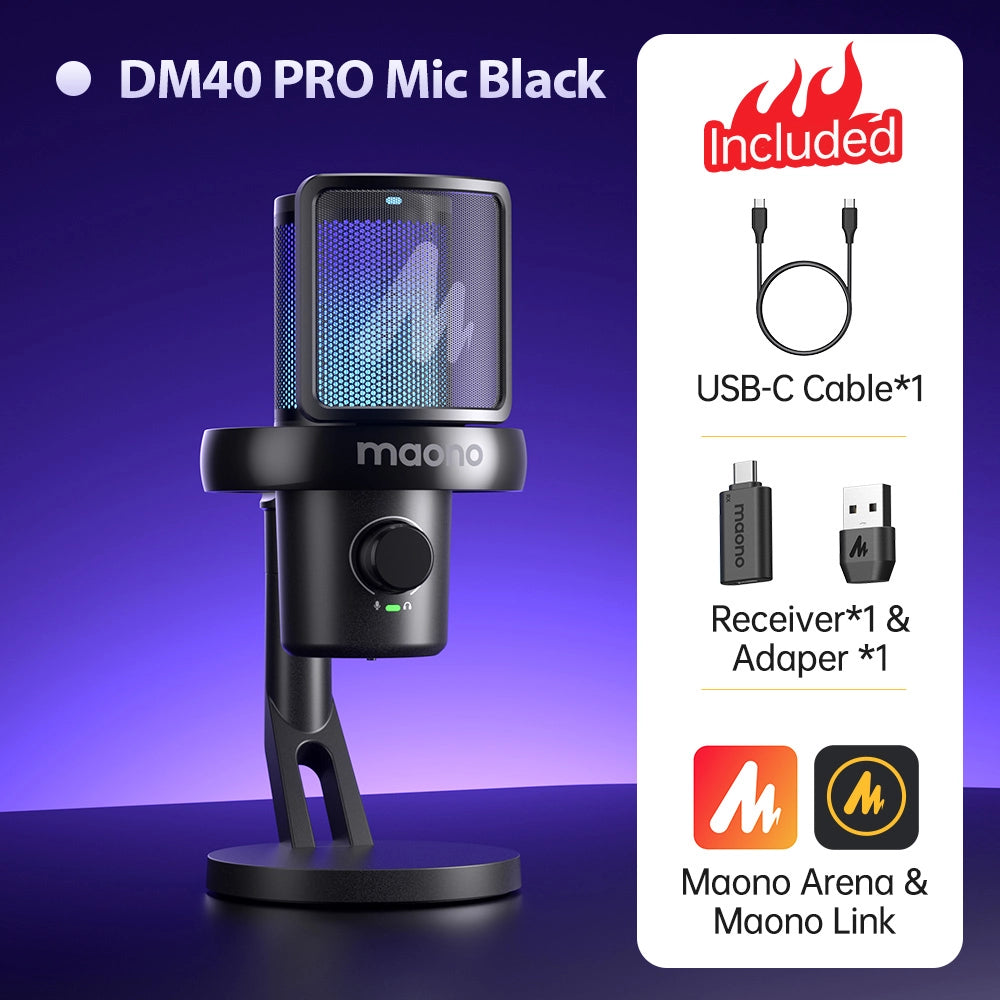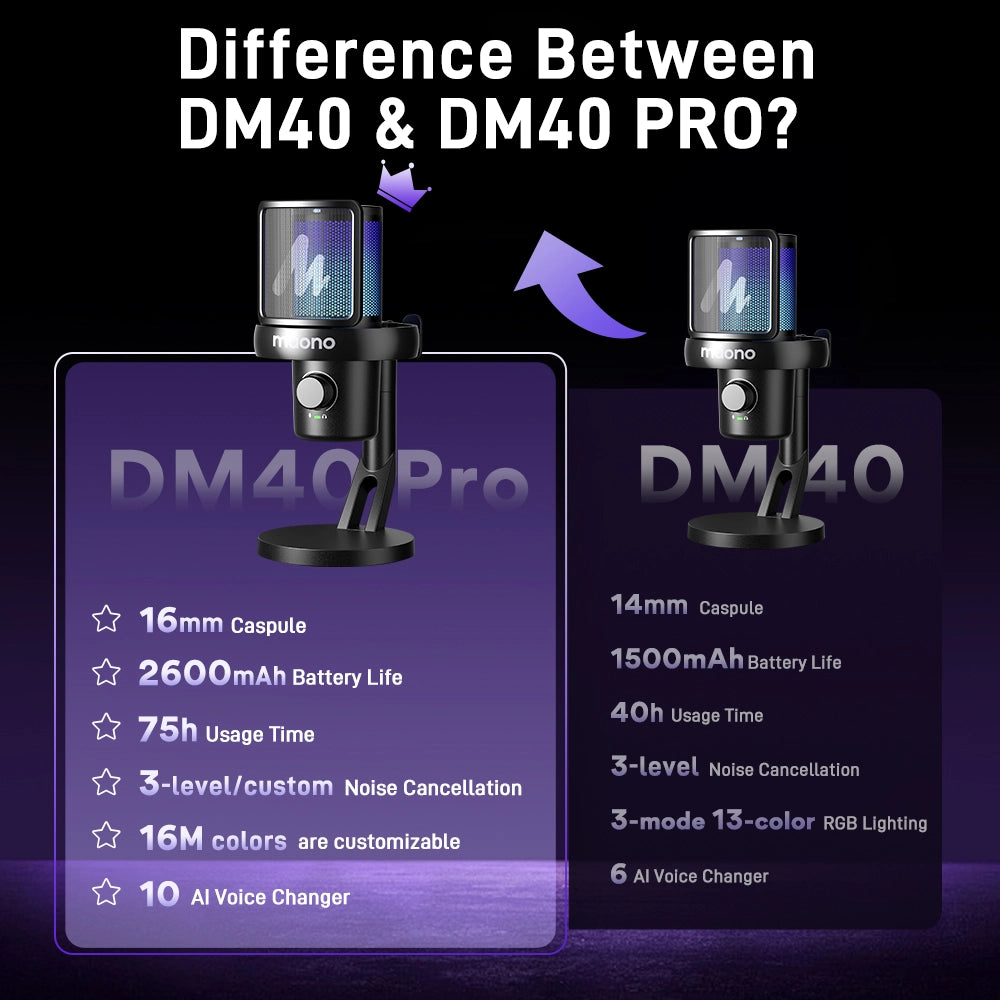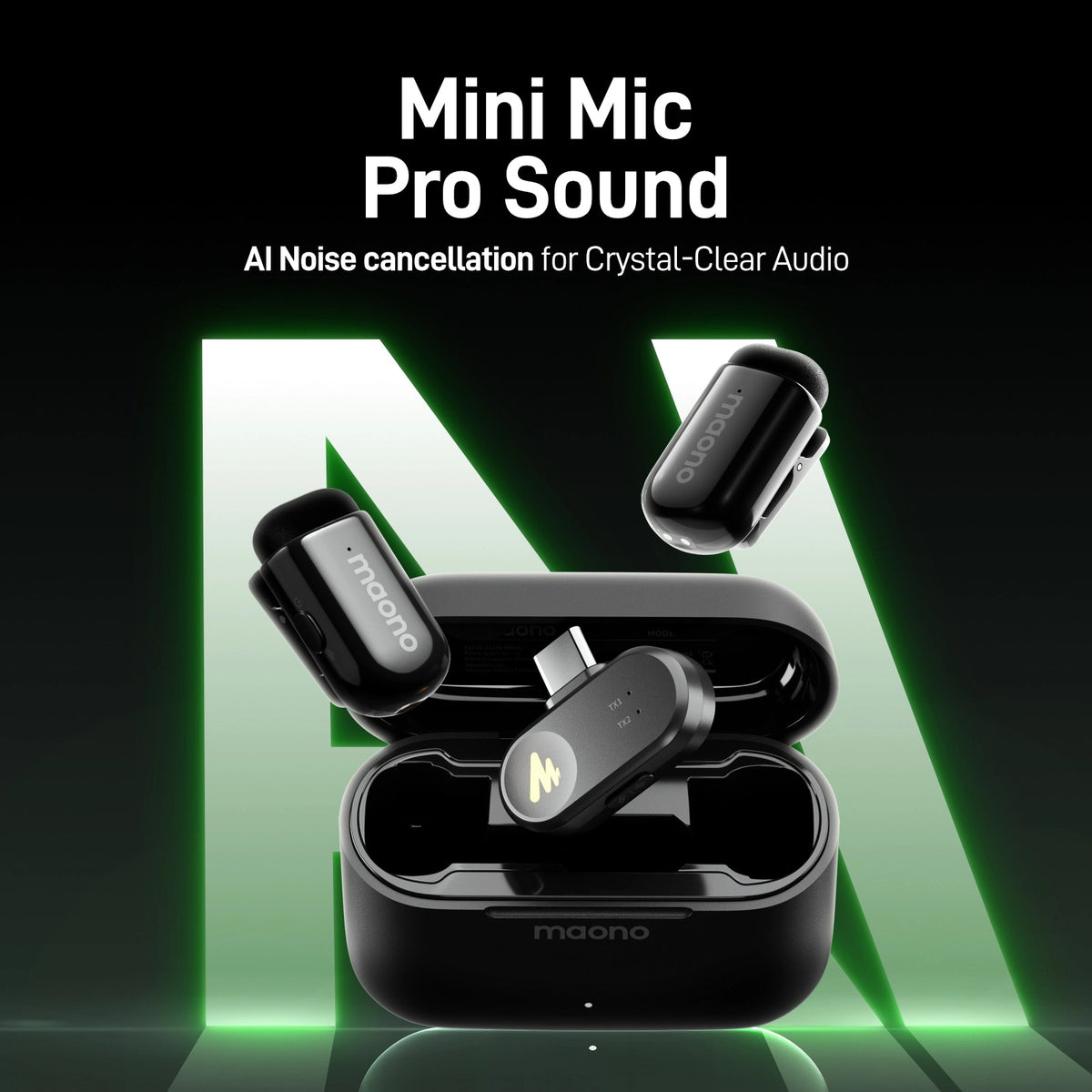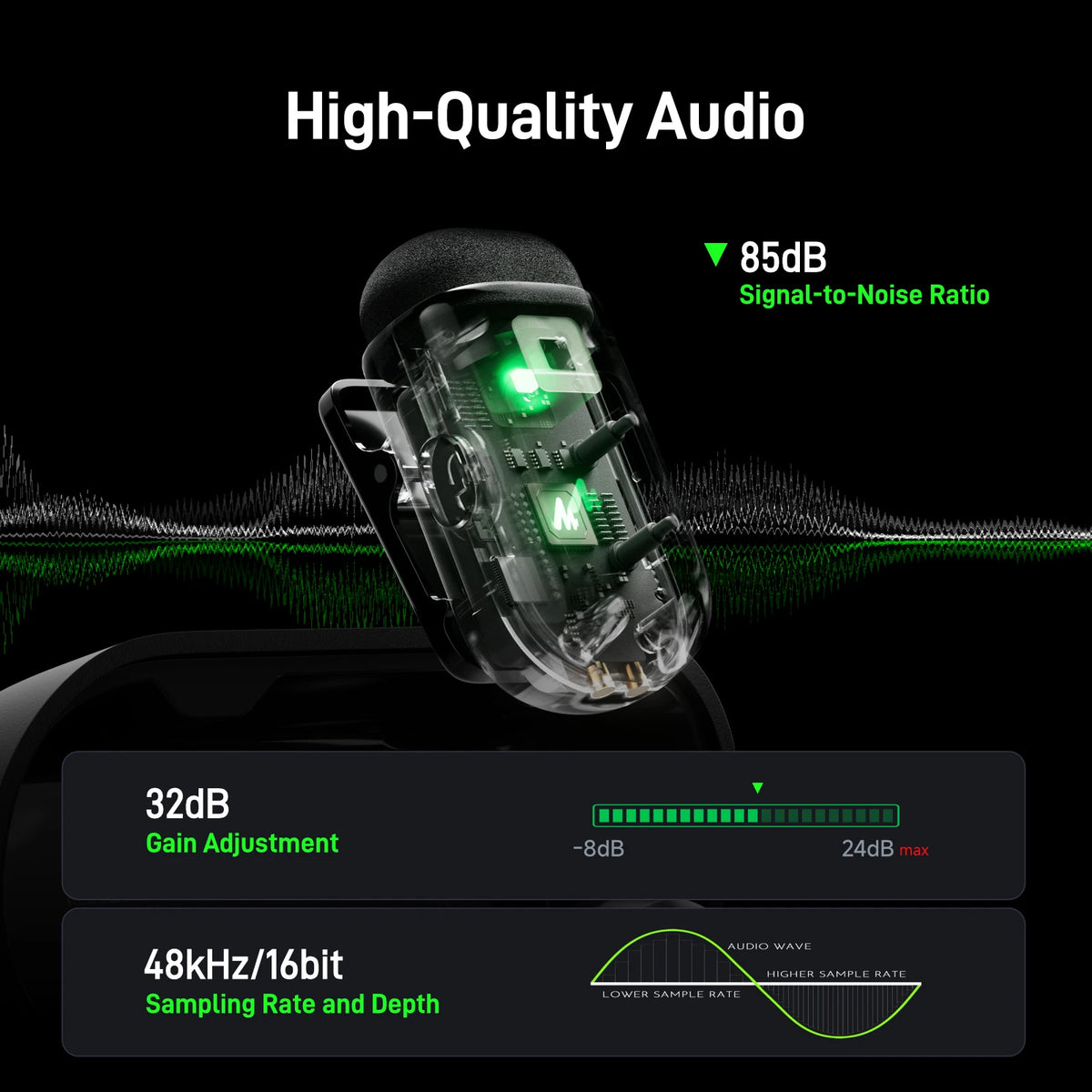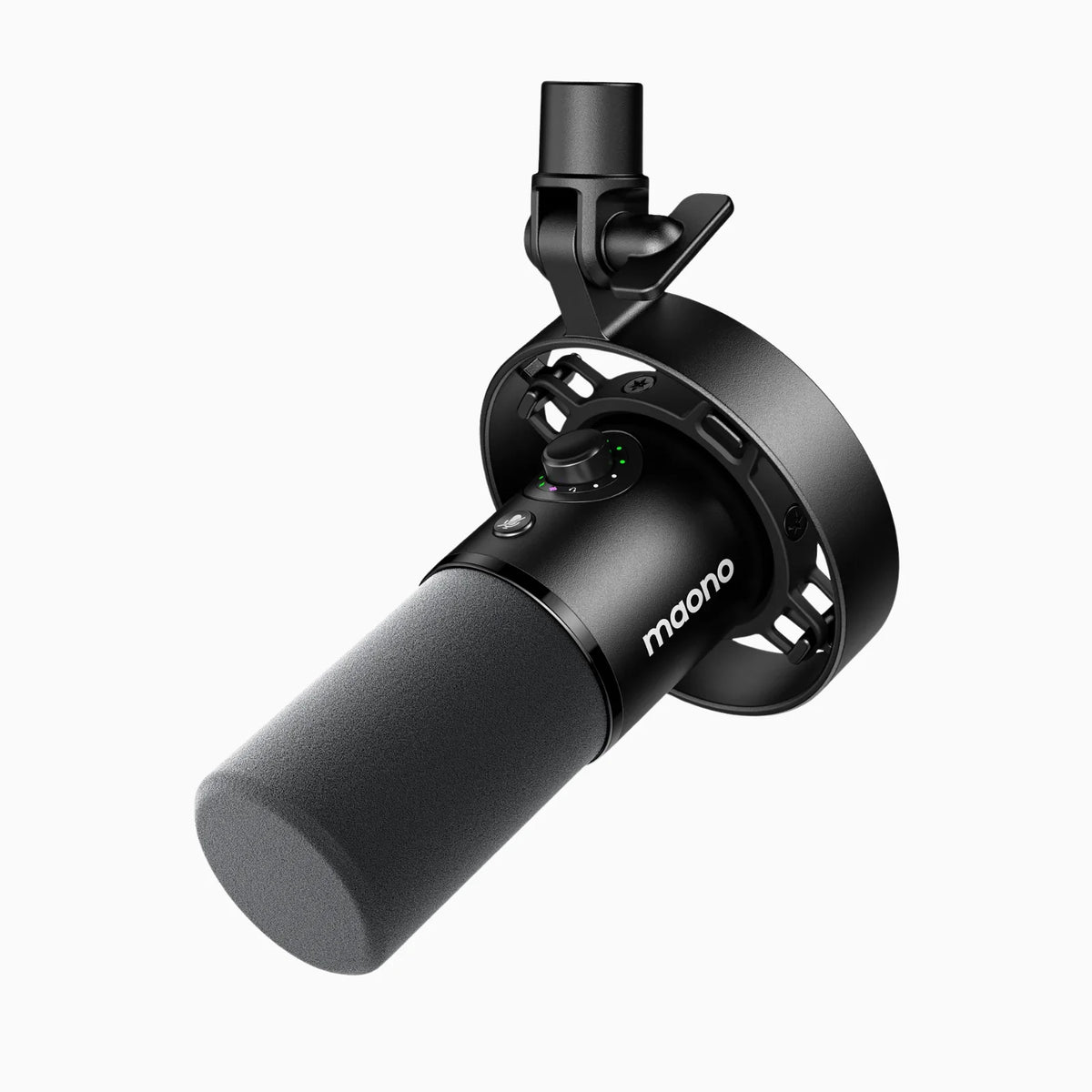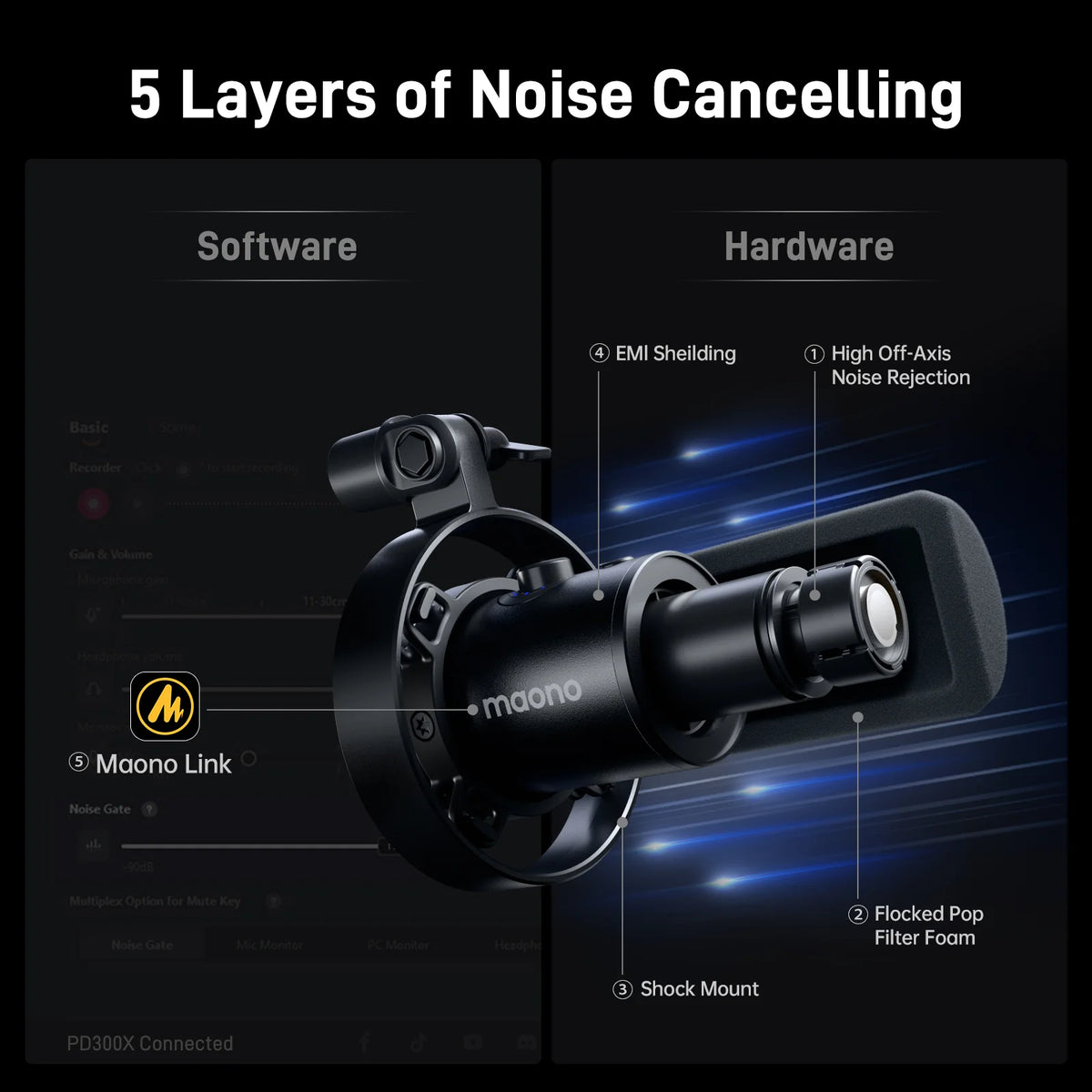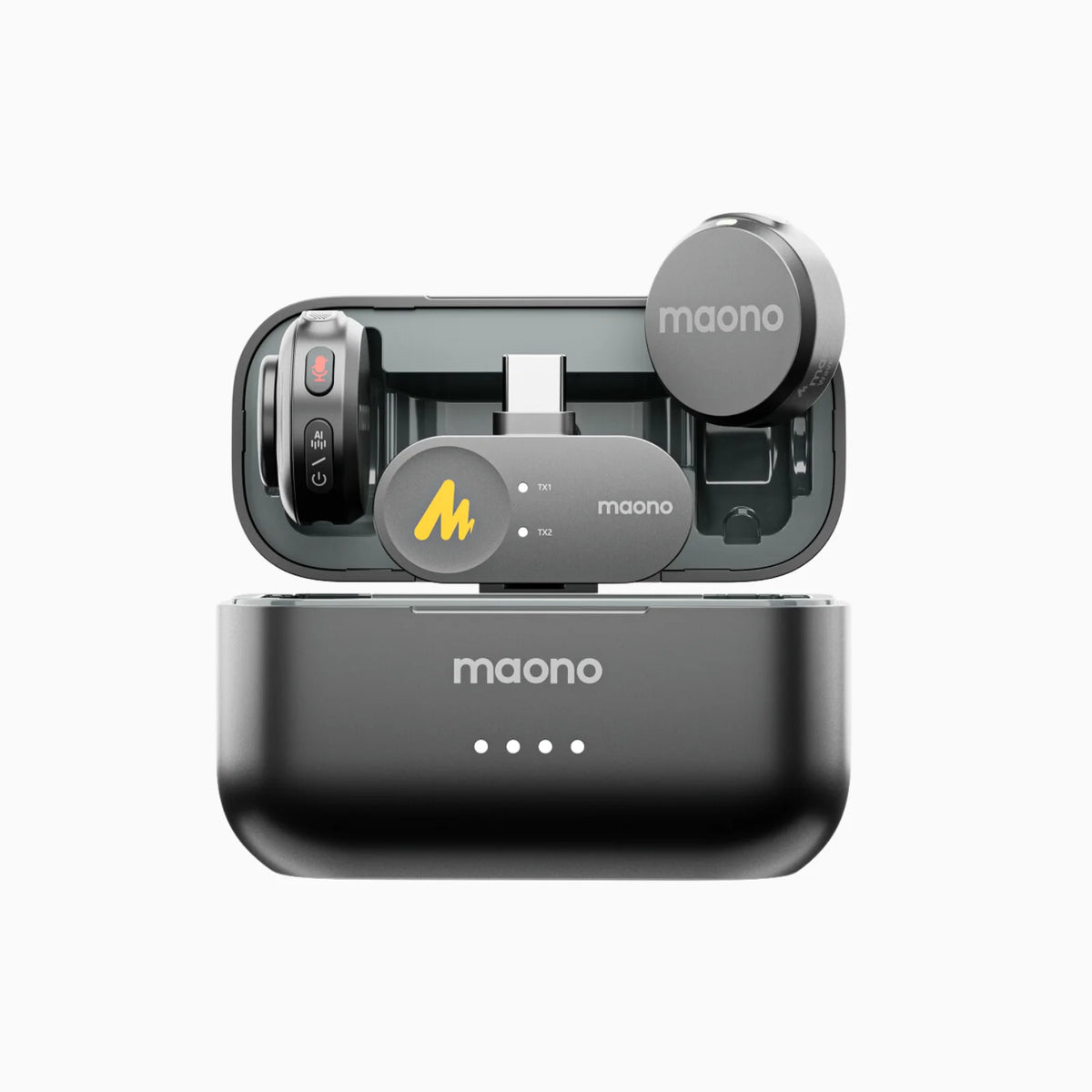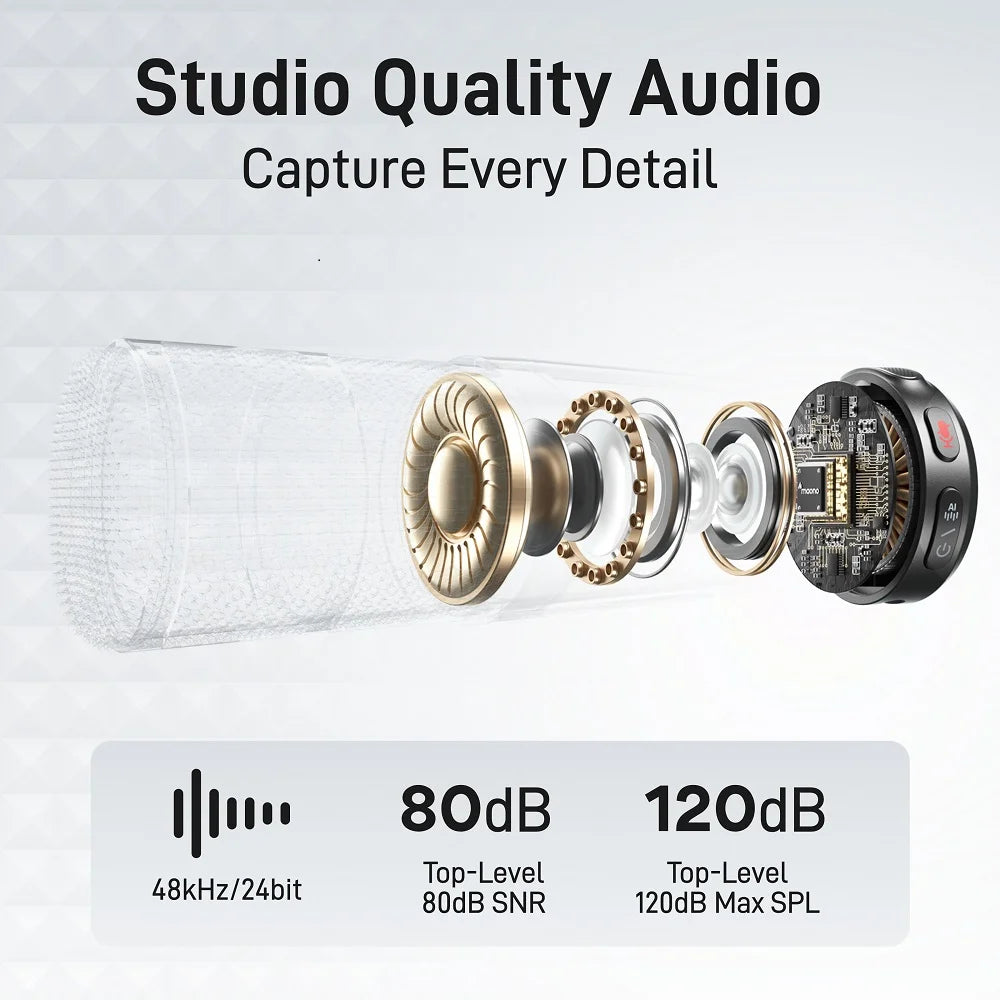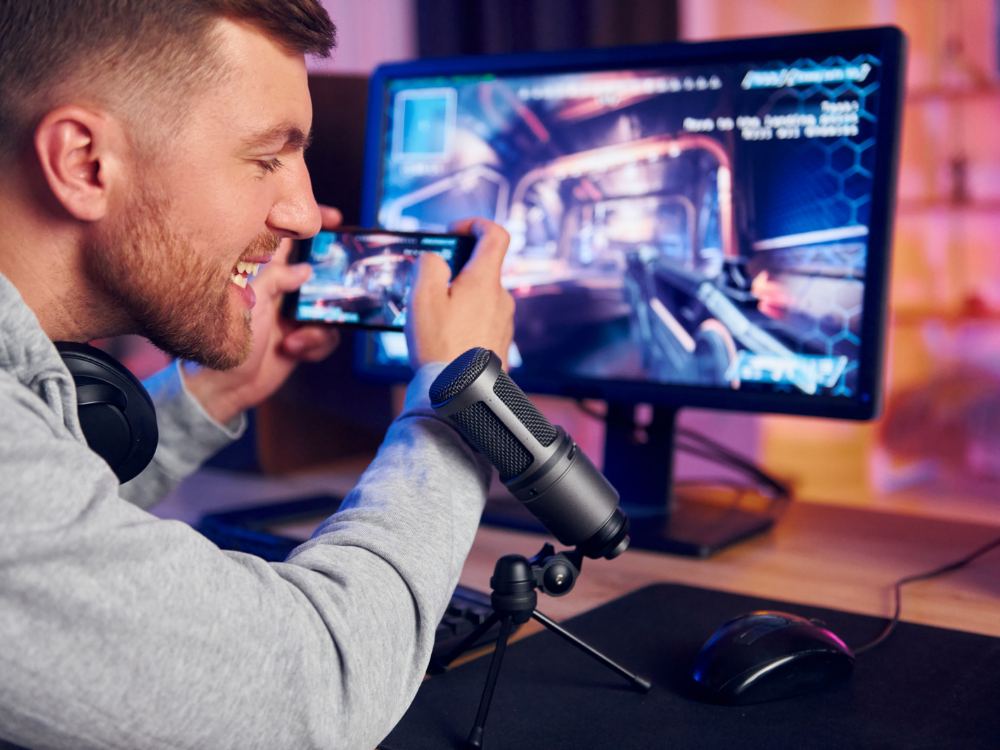Have you ever tried using a wireless lavalier microphone? They look so sleek and trendy. Wireless microphones have revolutionized the audio industry, offering convenience and mobility without sacrificing sound quality. Using a separate wireless microphone transmitter, we can ensure that our microphone and mouth stay close together all the time, even when we're far away from the camera that's picking up the sound.
In this article, we will delve into the workings of wireless microphones, the various types available, and their differences, and provide insights into choosing the best wireless microphone for different needs.
How do wireless microphones work?
Wireless microphones transmit audio signals without the need for physical cables. They utilize radio frequency (RF) or digital transmission technologies to send audio from the microphone to a receiver unit. The receiver then outputs the audio signal via a USB connection to a computer or digital device (e.g. camera or smart phone).
Wireless microphones work by using radio waves to transmit audio signals from the microphone to a receiver unit. Here’s a simple breakdown of the process:
1. Microphone (Transmitter)
The microphone itself has a built-in transmitter. Instead of sending signals through a cable, like traditional microphones, it converts sound waves (your voice, for example) into an electrical signal.
2. Radio Waves
The transmitter then converts this electrical signal into radio waves. These waves carry the audio signal through the air.
3. Receiver
The receiver unit, typically connected to a recording device or a sound system (like a camera or a mixing board), picks up these radio waves.
4. Conversion to Audio Signal
The receiver then converts the radio waves back into an electrical audio signal, which is identical to the signal originally captured by the microphone.
5. Output
Finally, this audio signal is sent to speakers, recording devices, or broadcast equipment where it can be heard or recorded.
Wireless microphones use specific frequencies within the radio spectrum allocated for this purpose. They also include features to minimize interference and ensure clear, reliable transmission of audio signals over distances ranging from a few meters to several hundred feet, depending on the model and environmental conditions. This setup allows for freedom of movement and eliminates cable clutter, making them ideal for live performances, presentations, and content creation.
More expensive high-end microphones come with additional features like onboard recording. Onboard recording means that the microphone attached to our shirt can save an audio file on its built-in storage while also sending our voice to the camera's receiver hundreds of feet away. If there's any signal loss, we can replace the problematic sound using the audio file saved on the microphone's storage.
What are the different types of wireless microphones?
1. Handheld Wireless Microphones
These are traditional microphones with built-in transmitters. They offer simplicity and ease of use, commonly used in live performances and public speaking engagements.
2. Lavalier (Lapel) Wireless Microphones
Lavalier microphones are small, clip-on mics attached to clothing near the speaker's mouth. They provide hands-free operation, making them popular among presenters, actors, and broadcasters.
3. Headset Wireless Microphones
Headset microphones feature a small microphone capsule mounted on a headset worn around the head or over the ears. They offer hands-free operation with improved stability, suitable for active presenters and performers.
What are the differences between them?
- Usage
Handheld microphones are versatile but require holding, while lavalier and headset microphones offer hands-free operation.
- Portability
Lavalier and headset microphones are more compact and lightweight compared to handheld models.
- Audio Quality
Handheld microphones often offer better sound quality due to larger microphone capsules, though lavalier and headset microphones can provide adequate audio for specific applications.
- Range
Some wireless microphones have longer transmission ranges than others, important for larger venues or outdoor use.
Which is the best wireless microphone?
The best wireless microphone depends on the specific use or purpose:
- For Performances
Handheld microphones like the Shure BLX24/SM58 Wireless System are popular due to their reliability and sound quality.
- For Presentations
Lavalier microphones such as the Sennheiser EW 112P G4 are preferred for their discreetness and hands-free operation.
- For Active Use
Headset microphones like the Audio-Technica System 10 ATW-1101/H92-TH provide stability and comfort during movement.
Consider factors like frequency range, battery life, and compatibility with existing equipment when choosing the best wireless microphone.
Best Wireless Microphone in 2024
1. Godox WEC
Max SPL: 120 dB
Digital Frequency: 2.4 GHz
Pick-up Pattern: Omnidirectional
Frequency Range: 50 Hz - 18 kHz
Battery Life: 6 hours
Max Distance: 100 meters
Onboard Recording: Yes
REASONS TO BUY:
+Compact and lightweight design
+High-quality audio recording
+User-friendly interface
REASONS TO AVOID:
-Limited battery life compared to some competitors
-Slightly higher price point
The Godox WEC is a versatile and reliable wireless microphone system ideal for vloggers, YouTubers, and content creators. It features an omnidirectional pick-up pattern, ensuring clear audio capture from any direction. With a maximum SPL of 120 dB, it can handle high sound pressure levels without distortion. The system operates on a 2.4 GHz digital frequency, providing stable and interference-free transmission up to 100 meters. The onboard recording capability allows users to record directly onto the transmitter, offering added convenience. However, the battery life of 6 hours might require users to plan for recharges during extended shoots.
2. RODE Wireless Pro
Max SPL: 118 dB
Digital Frequency: 2.4 GHz
Pick-up Pattern: Omnidirectional
Frequency Range: 20 Hz - 20 kHz
Battery Life: 7 hours
Max Distance: 100 meters
Onboard Recording: Yes
REASONS TO BUY:
+High-quality audio
+Professional-grade features
+Sturdy build quality
REASONS TO AVOID:
-Higher price point
Slightly shorter battery life compared to some competitors
The RODE Wireless Pro is a premium wireless microphone system designed for professional use. It offers an impressive frequency range of 20 Hz to 20 kHz, ensuring exceptional audio quality across the spectrum. The omnidirectional pick-up pattern captures sound from all directions, making it versatile for various recording situations. With a maximum SPL of 118 dB, it can handle loud sound sources without distortion. The system provides reliable 2.4 GHz digital transmission up to 100 meters and includes onboard recording for added convenience. While the battery life of 7 hours is adequate, it is slightly shorter than some competitors. Overall, the Wireless Pro is a top choice for professionals seeking high-quality audio capture.
3. Saramonic BlinkMe
Max SPL: 110 dB
Digital Frequency: 2.4 GHz
Pick-up Pattern: Omnidirectional
Frequency Range: 20 Hz - 20 kHz
Battery Life: 8 hours
Max Distance: 100 meters
Onboard Recording: Yes
REASONS TO BUY:
+Long battery life
+Wide frequency range
+Dual-channel recording
REASONS TO AVOID:
-Bulky transmitter design
-Limited customization options
The Saramonic BlinkMe is designed for professionals seeking high-quality audio capture with ease of use. It offers a wide frequency range from 20 Hz to 20 kHz, ensuring rich and detailed sound. The omnidirectional pick-up pattern captures audio from all directions, making it suitable for various recording environments. With a battery life of 8 hours and a maximum operating distance of 100 meters, the BlinkMe provides flexibility for different shooting scenarios. Its onboard recording feature ensures that users never miss a moment, even if the receiver is out of range. However, the transmitter's bulky design might not be as discreet as some users would prefer.
4. Maono WM620 Lavalier Wireless Microphone

Max SPL: 110 dB
Digital Frequency: 2.4 GHz
Pick-up Pattern: Omnidirectional
Frequency Range: 20 Hz - 20 kHz
Battery Life: 6 hours
Max Distance: 50 meters
Onboard Recording: No
REASONS TO BUY
+Affordable price
+Lightweight and portable
+Wide frequency range
+4 mic gain
+Long battery life
+noise canceling and mute button
+Compatible with Android, computers, and cameras
+Use lav mic with iPhone 15
REASONS TO AVOID
-Limited transmission distance
Price: $54.99
The Maono WM620 is an affordable wireless microphone system tailored for entry-level users and budget-conscious content creators. Its omnidirectional pick-up pattern ensures clear audio capture from all directions, and the wide frequency range of 20 Hz to 20 kHz provides rich and detailed sound. Operating on a 2.4 GHz digital frequency, the WM620 delivers stable and interference-free audio transmission up to 50 meters. The compact and lightweight design makes it highly portable. However, its battery life of 6 hours may require frequent recharges during extended use, and the limited transmission distance may not be suitable for larger venues.
5. Maono WM821

Max SPL: 105dB SPL(1kHz@1m)
Digital Frequency: 2.4 GHz
Pick-up Pattern: Omnidirectional
Frequency Range: 20 Hz - 20 kHz
Battery Life: 20 hours
Max Distance: 50 meters
Onboard Recording: Yes
REASONS TO BUY
+Onboard recording capability
+Good sound quality with a wide frequency range
+Compact and lightweight design
+Comes with a wired lapel microphone (clip-on)
REASONS TO AVOID
-Limited transmission distance
Price: $169.99
The Maono WM821 is a versatile wireless microphone system designed for content creators who need high-quality audio recording with convenience. It features an omnidirectional pick-up pattern, ensuring that sound is captured evenly from all directions. The wide frequency range of 20 Hz to 20 kHz allows for rich and detailed audio reproduction, suitable for a variety of recording scenarios. Operating on a 2.4 GHz digital frequency, the WM821 ensures stable and interference-free transmission up to 50 meters.
How small can a wireless microphone be?
Wireless microphones can be incredibly compact, with some lavalier and headset models featuring microphone capsules as small as a few millimeters in diameter. Advances in miniaturization have allowed manufacturers to create lightweight and discreet microphones suitable for various applications without compromising audio quality.
Conclusion
Wireless microphones offer unparalleled flexibility and convenience for audio professionals, presenters, and performers alike. Understanding the workings of wireless microphones, the different types available, and their respective strengths can help in choosing the best option for specific needs. Whether for live performances, presentations, or content creation, the right wireless microphone enhances audio quality and user experience, facilitating seamless communication and entertainment in diverse settings. Embrace the versatility of wireless USB microphones to elevate your audio setup and enjoy the freedom of movement without compromising sound excellence.








